#BIM Execution Plan
Explore tagged Tumblr posts
Text

Implement BIM Execution Plan For Construction Project Success
A BIM Execution Plan (BEP) is a document that outlines how a BIM project implementation will be executed, managed, and delivered. It is an essential tool for ensuring that all stakeholders are on the same page from the start of the project and that everyone understands their roles and responsibilities.
Our Comprehensive BIM Execution Plan (BEP) is your roadmap to achieving successful Building Information Modeling (BIM) implementation. This meticulously crafted plan outlines the strategy, standards, and protocols for your BIM project, ensuring seamless collaboration, data accuracy, and project efficiency.
At, TopBIM we prioritize ISO BIM standards so that our clients’ projects stay in compatibility with different software solutions. Visit our website to learn more about how we can help you with your projects.
2 notes
·
View notes
Text
Mastering BIM Execution: Your Strategic Roadmap
"Discover a meticulously crafted BIM execution plan designed to optimize project efficiency and deliver superior outcomes." Learn how to create an effective BIM Execution Plan (BEP) with our detailed guide. Includes key steps, template download, and best practices for successful project implementation.
0 notes
Text
BIM Execution Plan (BEP) and Its Benefits
A BIM Execution Plan (BEP) is a comprehensive document that outlines the processes, standards, and protocols for implementing Building Information Modeling (BIM) on a project. It serves as a roadmap for the entire project team, ensuring that everyone is aligned and aware of their roles and responsibilities. The benefits of a BEP include enhanced collaboration, improved project coordination, and increased efficiency. By clearly defining expectations and procedures, a BEP minimizes misunderstandings, reduces errors, and streamlines workflows, ultimately leading to more successful and cost-effective project outcomes.
0 notes
Text
Master Information Delivery Plan (MIDP) Task Information Delivery Plan (TIDP) BIM is changing the way designers work with 3D graphic and non-graphic information being incorporated in the BIM Model from the earliest stages of design. The efficiency, accuracy, and flexibility of BIM inspire confidence in the design process and provide freedom from an inordinate focus on drawing and documentation production. https://www.alkhoorygroup.com/bim-consultancy-services.html
0 notes
Text
5 Reasons why do you need BIM execution plan for Construction project
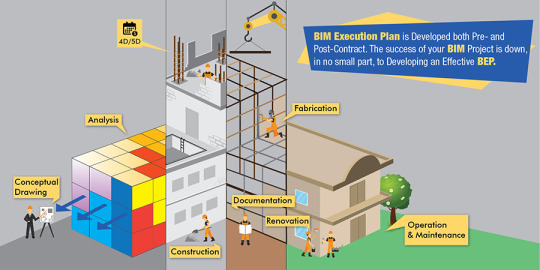
A BIM execution plan (BEP) is a document that defines the processes, workflows, and information requirements for implementing Building Information Modeling (BIM) on a construction project.
Having a well-developed BIM Execution Plan ensures all parties are aligned on BIM implementation and allows you to maximize value throughout the project lifecycle. Here are 5 reasons why you need BIM execution plans for your construction projects:
Communication across project lifecycle - BEP facilitates effective communication and collaboration across all project stages.
Living, editable document - BEP is adjustable to meet evolving project needs and standards.
Focuses on priority details - BEP prevents overload by concentrating on key project tasks.
Enhances data/project transparency - BEP provides shared access to implementation details for all parties.
Satisfies stakeholders - Following the BEP helps ensure on-time, on-budget delivery and pleased stakeholders.
Read the detailed article here: Benefits of BIM Execution Plan >>
2 notes
·
View notes
Text
How Architectural Bim Services Streamline Building Design

Don’t you have any idea about how Architectural BIM Services USA made huge changes. Here you go. In this rapidly evolving architecture, engineering, and construction industry, there is a huge demand for promising work. Those who complete the project with precision, efficiency, and collaboration are always welcome.
#Architectural BIM Services USA#Bim Service Providers#Architectural Bim Services#Structural Bim Services#Mepf Bim Services#Infrastructure Landscape Mepf#4D Bim Software#5D Quantity Take-Off#Building Information Modelling 6D#7D Bim Asset Management Company#Point Cloud To Bim Conversion#Cad To Bim Modeling Services#Construction Documentation Checklist#Cobie Service India#Bim For Facility Management#Structural Precast Modelling#Revit Fabrication Service India#Bim Consulting Services India#Bim Implementation Service India#Bim Documentation Service#Bim Execution Planning Guide
0 notes
Text
BIM Execution Planning for Technology Integration
In today's fast-paced construction industry, harnessing the power of BIM Execution Planning (BEP) is crucial for seamless technology integration. BEP serves as the blueprint for effectively managing digital tools and processes throughout a project's lifecycle. By meticulously detailing workflows, standards, and collaboration protocols upfront, BEP ensures that technologies like virtual design and construction (VDC) and cloud-based project management systems are fully leveraged from conception to completion. This proactive approach not only enhances efficiency but also minimizes errors, paving the way for more streamlined and cost-effective project delivery.

0 notes
Text
Rebar Modelling services in Toronto:-
Seekurity work in far-reaching pre-development arrangements that envelop the turn of events and oversight of savvy models, contact Seekurity and get the best services. To know more: https://www.seekcurity.com/rebar-modelling.html

0 notes
Text
Empowering Future Urban Designers: A Vision for Tomorrow

As globalization accelerates, the world is experiencing rapid urban expansion. Metropolitan city centers serve as the backbone of economic growth and a sustainable future. Urban planning and architectural design play a crucial role in shaping both our current living spaces and future habitats. Therefore, on World Architecture Day, it is essential to reflect on the importance of urban design in our everyday lives and its impact on community development.
The Role of Future Urban Designers and Architects
The next generation urban designers and architects hold the key to shaping tomorrow’s landscapes. Given the complexities of real estate growth, infrastructure networks, and diverse socio-civic amenities in urban hubs, strategic urban design remains at the core. Future leaders must be equipped with analytical thinking, innovative design approaches, technological integration, and policy-driven solutions to craft livable, dynamic urban environments. This blog delves into how we can establish a framework for the future.
Leveraging Technology for Sustainable Urban Design
In today’s digital landscape, technology is revolutionizing urban development. With cutting-edge AI tools, cities are being envisioned using Blockchain, BIM modeling, drones, augmented reality, and GIS mapping. Intelligent technology is essential for addressing urban challenges, climate risks, and resource scarcity. Therefore, urban architectural planning should embrace tech-driven design ideologies, empowering young visionaries to create resilient, smart, and adaptive cities.
Sustainability as a Cornerstone of Urban Growth
The current generation is highly conscious of the pressing need for sustainability in urban planning. As environmental concerns escalate, the future of urban development depends on sustainable practices. Green building methods, energy-efficient technologies, and eco-conscious designs must become fundamental to city landscapes. The mixed-use integrated townships by the Hiranandani Communities exemplify this future-forward approach. With meticulously planned socio-civic infrastructure, precise architectural execution, and state-of-the-art engineering, these townships seamlessly blend aesthetics, functionality, and sustainability.
Balancing Aesthetics with Practicality
A well-designed city is more than just a cluster of towering buildings. It must thoughtfully integrate aesthetics with functionality to create a sustainable urban ecosystem. Efficient transportation networks, abundant green spaces, essential services, and robust infrastructure contribute to a higher quality of life for residents.
Community Engagement in Urban Design
Empowering the next generation also involves fostering participatory urban planning. When communities are actively involved in the design process, cities evolve to better serve their residents. Young minds bring innovative perspectives, allowing for the creation of inclusive, forward-thinking urban spaces. By promoting collaborative planning, architects and urban designers can develop cities that are both user-centric and environmentally sustainable.
Government Backing for Urban Sustainability
A sustainable urban future requires strong government policies that support and incentivize progressive building initiatives. Developers prioritizing eco-friendly, inclusive, and functional designs should be encouraged through financial incentives and tax benefits. By implementing favorable design policies, governments can inspire developers to construct landmark structures that enrich cityscapes and promote urban tourism.
Conclusion: Building the Cities of the Future
As urban design and architecture continue to evolve, they must prioritize both societal and environmental sustainability. Architects, developers, and policymakers must collaborate to pioneer innovative solutions. By engaging young professionals and integrating emerging technologies, we can create inclusive, resilient communities that cater to present needs while shaping the future of urban living.
#next generation urban designers#urban development#hiranandani communities#hiranandani sustainability
8 notes
·
View notes
Text

NAVIGATING PROJECT MANAGEMENT IN THE AEC INDUSTRY
Navigating Project Management in the AEC industry involves a series of interconnected tasks that require effective planning, execution, monitoring, and control. By following best practices and leveraging project management methodologies such as APM, SCRUM, KANBAN, or the Traditional WATERFALL Project Management Methodology, the AEC professionals can successfully deliver complex projects while meeting stakeholder expectations and achieving project objectives.
As an architectural manager with a Master of Architecture degree and an architectural engineering degree from reputable institutes, having experience in project and design management for large-scale commercial facilities, multi-story offices, and high-rise administration buildings, I can provide the necessary artifacts to enhance project success, improve team collaboration, and effectively handle project complexities in the architecture, engineering, and construction (AEC) sector.
1. Set Clear Goals and Objectives:
Define project scope, including deliverables and constraints.
Establish SMART (Specific, Measurable, Achievable, Relevant, Time-bound) goals.
Align goals with stakeholder expectations and project requirements.
Obtain buy-in from key stakeholders on project objectives.
2. Develop a Comprehensive Project Plan:
Create a detailed work breakdown structure (WBS) to organize project tasks.
Define project milestones and dependencies.
Develop a project schedule with timelines and resource allocation.
Identify risks and develop a risk management plan.
Establish a budget and financial plan for the project.
3. Foster Effective Communication:
Establish communication channels and protocols for project team members.
Hold regular project meetings to discuss progress, issues, and updates.
Use clear and concise language in all communications.
Encourage open and transparent communication among team members.
Address communication barriers and conflicts promptly.
4. Embrace Technology and Communication:
Utilize project management software for task tracking and collaboration.
Implement communication tools such as emails, instant messaging, and video conferencing.
Leverage cloud-based platforms for document sharing and version control.
Provide training and support for team members on project management tools.
Stay updated on new technologies and tools to improve project efficiency.
5. Manage Change Effectively:
Establish a change control process to evaluate and approve changes to project scope.
Communicate changes to stakeholders and assess their impact on project objectives.
Update project documentation and plans to reflect approved changes.
Monitor changes to prevent scope creep and ensure project alignment with goals.
Evaluate the risks and benefits of proposed changes before implementation.
6. Foster Collaboration and Teamwork:
Encourage team members to share ideas, feedback, and best practices.
Foster a collaborative work environment that values diversity and inclusivity.
Promote team building activities and recognize team achievements.
Facilitate cross-functional collaboration and knowledge sharing.
Resolve conflicts and promote a positive team culture.
7. Continuously Monitor and Evaluate Progress:
Track project performance against key performance indicators (KPIs).
Conduct regular project reviews to assess progress and identify areas for improvement.
Monitor project risks and issues and take corrective actions as needed.
Evaluate project outcomes against initial goals and objectives.
Use lessons learned to make informed decisions and optimize project performance.
By focusing on these subtasks within each point, project managers can enhance project success, improve team collaboration, and effectively manage project complexities in the Architecture, Engineering, and Construction (AEC) industry.
Sonetra KETH (កេត សុនេត្រា) •Architectural Manager, Project Manager, BIM Director •建築師經理, 專案經理, BIM總監 •Giám đốc kiến trúc, Giám đốc dựán, Giám đốc BIM •RMIT University Vietnam + Institute of Technology of Cambodia
#Pinned#Avatar#sonetra-keth#Badge image.#Nov 1#2023#Sonetra KETH#Architectural Manager#Project Manager#BIM Director#Thought Leadership#Design Management#Project Management#BIM Management#建筑师经理、专案经理、BIM总监#Giám đốc Kiến Trúc#Giám đốc Dựán#Giám đốc BIM#<meta name=“google-adsense-account” content=“ca-pub-9430617320114361”>#Sonetra Keth#blueprint#Inspired Urban Planning#Urban Planning Framework#crossorigin=“anonymous”></script>#កេត សុនេត្រា#នេត្រា#NETRA#netra#n8tra#N8TRA
5 notes
·
View notes
Text
How Civil Engineering Courses Are Evolving with New Technology
Civil engineering is no longer just about bricks, cement, and bridges. It has become one of the most future-focused fields today. If you are planning to study civil engineering, you must understand how the course has evolved. The best civil engineering colleges are now offering much more than classroom learning.
You now study with technology, not just about it. And this shift is shaping your career in ways that were never possible before.
Technology is Changing the Civil Engineering Classroom
In the past, civil engineering courses relied on heavy theory and basic field training. Today, you learn through software, simulations, and smart labs. At universities like BBDU in Lucknow, classrooms are powered by tools like AutoCAD, Revit, STAAD Pro, and BIM.
These tools help you visualize structures, test designs, and even simulate natural forces.
You work on 3D modeling tools
You test designs virtually before real-world execution
You understand smart city layouts and green construction methods
This means your learning is hands-on, job-ready, and tech-driven.
You Learn What the Industry Actually Uses
Most construction and infrastructure companies now depend on digital tools to plan, design, and execute projects. This is why modern B.Tech Civil Engineering courses include:
Building Information Modelling (BIM)
Geographic Information Systems (GIS)
Remote Sensing Technology
Drones for land surveying
IoT sensors in smart infrastructure
Courses in colleges like BBDU include these topics in the curriculum. You do not just learn civil engineering. You learn the tools that companies expect you to know from day one.
The future of Civil Engineering is Data-Driven
You might not think of civil engineering as a data-heavy field. But now, big data is used to monitor structural health, traffic flow, and resource planning. Many universities have added data analysis and AI basics to help you understand how smart infrastructure works.
By learning how to handle real-time data from buildings or roads, you become more skilled and more employable.
Real-world exposure is Now Part of the Course
Good civil engineering colleges in Uttar Pradesh understand that you need industry exposure. Colleges like BBDU offer:
Internships with construction firms and government bodies
Industry guest lectures and site visits
Capstone projects linked to real problems
You are not just attending lectures. You are solving real-world construction challenges while still in college.
Why Choose BBDU for Civil Engineering?
In Lucknow, BBDU is one of the few private universities offering a modern civil engineering course with world-class infrastructure. You learn in smart labs, access tools used by top firms, and receive career counseling throughout the program.
Here’s what makes BBDU a smart choice:
Advanced labs and smart classrooms
Training in AutoCAD, STAAD Pro, BIM
Live projects and on-site construction learning
Career cell and placement support
Affordable fees and scholarships for deserving students
Civil Engineering is Still One of the Most Stable Careers
Reports show that India will spend over ₹100 lakh crores on infrastructure in the next few years. Roads, smart cities, renewable power plants, metros – all need civil engineers. And companies prefer students trained in construction technology, digital tools, and real-world planning.
So, if you're thinking about joining a course, look at how it prepares you for tomorrow.
The future of civil engineering is digital, and your education should be too. Choose a program that keeps up with the times. Choose a university that helps you build more than just buildings – it helps you build your future.
Apply now at BBDU – one of the most future-focused civil engineering colleges in Uttar Pradesh.
2 notes
·
View notes
Text
BIM Execution Plan Guide for Robust Strategies

BIM is a go to tool and requires accurate implementation in the construction project. With the help of a BIM execution plan, AEC professionals can strategize the process and get accurate outcomes. Here’s a detailed guide for robust strategies for BEP.
#BIM Modeling Services#3D BIM Modeling#Revit BIM Services#BIM Project Management#BIM Consulting Firm#Outsource BIM Services#3D Revit Modeling#3D Modeling Services#Architectural BIM Services#BIM Services in India#BIM Company India
2 notes
·
View notes
Text
Architectural 2D CAD Drafting & Design Services: Ensuring Precision and Quality
Architectural 2D CAD Drafting
Architectural 2D CAD drafting is the backbone of modern design workflows, offering precise and detailed technical drawings for projects of all scales. Whether it’s floor plans, elevations, or technical drawings, Architectural 2D CAD Drafting & Design Services ensure every detail is accurately represented, eliminating errors and streamlining construction processes.
With advanced tools like AutoCAD and Revit, these services allow architects, engineers, and contractors to work collaboratively, achieving precision and efficiency in their designs.
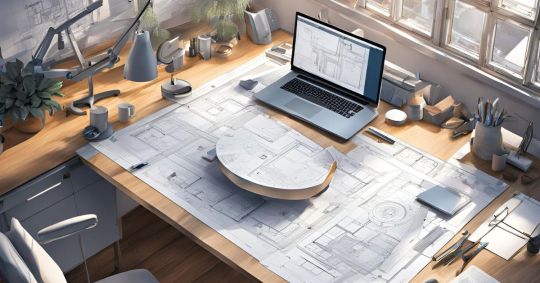
Importance of 2D CAD Drafting in Modern Architecture
2D CAD drafting services have become an integral part of architectural workflows, helping professionals overcome traditional design challenges. Here's why they are indispensable in modern architecture:
Precision: Every detail, from measurements to layouts, is highly accurate.
Collaboration: CAD files are easily shareable, ensuring all stakeholders are aligned.
Efficiency: Compared to manual drafting, CAD tools significantly reduce the time required to produce drawings.
By integrating 2D drafting and 3D BIM Modeling Services, architects and engineers can move seamlessly from conceptual design to execution while maintaining accuracy and consistency.
Benefits of 2D CAD Drafting for Professionals
For architects, engineers, and contractors, architectural 2D drafting offers numerous benefits, including:
Enhanced PrecisionAccurate drafting reduces errors during construction, ensuring smooth project execution.
Streamlined WorkflowWith 2D drafting and Architectural Design Visualization Services, teams can transition from design to documentation more effectively.
Cost EfficiencyOutsourcing 2D CAD drafting services reduces overhead costs, as there’s no need for maintaining an in-house drafting team.
Flexibility and ScalabilityProjects often require revisions and updates. CAD drafting ensures that modifications are quick and hassle-free without disrupting the entire workflow.
Professionals across industries leverage these benefits to optimize their design and construction processes.
Applications of 2D CAD Drafting
Architectural 2D drafting services have a wide range of applications in design and construction, including:
Floor Plans: Clearly defined layouts for residential, commercial, and industrial buildings.
Elevations: Detailed visual representations of exterior facades for presentations and approvals.
Technical Drawings: Accurate documentation that provides contractors and engineers with essential construction details.
To cater to complex design needs, Architectural CAD Design and Drafting Services provide tailored solutions for architects and engineers, enabling seamless integration of technical precision with creative concepts.
Industries Benefiting from 2D CAD Drafting
Several industries rely on architectural 2D CAD drafting services for achieving project success. Here’s a closer look:
ConstructionPrecise drafting reduces on-site errors, saving time and money during construction. Contractors depend on 2D drafting for creating accurate blueprints.
Interior DesignInterior designers use CAD drafting to create detailed layouts for furniture placement, lighting design, and more.
Real EstateReal estate developers benefit from professional drafting services to create detailed property layouts for presentations and marketing materials.
By relying on Architectural Documentation Services, these industries achieve precision, professionalism, and timely project delivery.
Leveraging Professional CAD Drafting Services
Outsourcing 2D CAD drafting services to experienced professionals can significantly optimize project outcomes. Here’s how:
Expertise: Professional drafters bring years of experience in handling complex drafting requirements.
Cost Savings: Avoid the expenses of maintaining in-house resources by outsourcing CAD drafting tasks.
Scalability: Services are tailored to meet specific project needs, ensuring flexibility and adaptability.
By leveraging Paper to CAD Conversion Services, architects, engineers, and contractors can focus on core project responsibilities while ensuring that designs are accurate and construction-ready.
Conclusion
Architectural 2D CAD drafting services are indispensable for achieving precision, efficiency, and collaboration in modern design projects. From floor plans to elevations and technical drawings, these services provide a solid foundation for successful project execution.
If you're looking to enhance your project outcomes with professional drafting services, get in touch today to see how we can help bring your vision to life.
2 notes
·
View notes
Text
From 2D to BIM: Upgrading Your Architectural Design Process
Are you still stuck in the 2D era?
Upgrade your architectural design process to the cutting-edge technology of Building Information Modelling (BIM). This game-changing innovation is transforming the architecture industry, and it's time to join the revolution.
The Limitations of 2D Design
Traditional 2D architectural design has served us well, but it's time to acknowledge its constraints. 2D designs lack the depth and detail required for modern construction projects. if it's fail to provide a comprehensive understanding of the building's components, leading to errors, miscommunications, and costly rework.
Lack of Clarity: 2D designs can be ambiguous, leading to misunderstandings and misinterpretations.
Inadequate Visualization: 2D designs struggle to convey complex spatial relationships and design intent.
Inefficient Collaboration: 2D designs make it challenging for stakeholders to collaborate and communicate effectively.
Error-Prone: 2D designs are more susceptible to human error, leading to costly rework and delays.
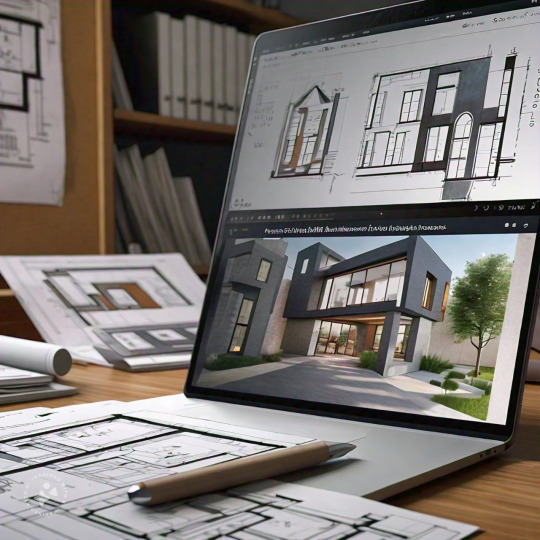
Enter BIM: The Future of Architectural Design
BIM is more than just a design tool – it's a collaborative platform that unifies architecture, engineering, and construction professionals. With BIM, you can create detailed, data-rich models that simulate real-world performance. This revolutionary technology enables:
Improved Collaboration: Stakeholders can access and contribute to the design process in real-time, ensuring everyone is on the same page.
Enhanced Visualization: 3D models and simulations facilitate better understanding and communication, reducing errors and miscommunications.
Increased Accuracy: Automated clash detection and interference checking minimize errors, ensuring a more efficient design process.
Efficient Project Management: Real-time tracking and analysis streamline the construction process, reducing delays and cost overruns.
Seamless Transition with Architectural BIM Services
Upgrading to BIM doesn't mean starting from scratch. Our expert Architectural BIM Services will guide you through a seamless transition, leveraging your existing designs to create rich, data-driven models. Our comprehensive services include:
Architectural BIM Modeling: Transforming 2D designs into detailed, interactive 3D models, enabling enhanced visualization and collaboration.
Architecture CAD Drawing: Converting traditional CAD files into BIM-compatible formats, ensuring a smooth transition.
Architectural 3D Modeling Services: Creating immersive, photorealistic visualizations, enhancing design communication and stakeholder engagement.
Architectural 3D Rendering Services: Generating stunning, high-resolution images and animations, perfect for marketing and presentation purposes.
Benefits of BIM
Enhanced Creativity: Explore new design possibilities with data-driven models, unlocking innovative solutions.
Improved Productivity: Streamline your workflow with automated processes, reducing design time and costs.
Increased Competitiveness: Stand out with cutting-edge technology and innovative solutions, attracting clients and projects.
Better Decision-Making: Data-driven models enable informed decisions, reducing risks and improving project outcomes.
Sustainability: BIM facilitates sustainable design, reducing environmental impact and promoting green building practices.
Implementing BIM in Your Practice
Upgrading to BIM requires a strategic approach. Here's a step-by-step guide to ensure a smooth transition:
Assess Your Current Workflow: Identify areas for improvement and determine the best approach for your practice.
Choose the Right BIM Software: Select a software that aligns with your needs and skill level.
Train Your Team: Invest in comprehensive training to ensure a seamless transition.
Develop a BIM Execution Plan: Establish clear goals, processes, and standards for your BIM implementation.
Start Small: Begin with a pilot project to test and refine your BIM workflow.
The architectural design process is evolving, and BIM is leading the charge. Don't let outdated design processes hold you back. Embrace the future of architecture with our expert BIM services. Discover the advantages of enhanced creativity, improved productivity, and increased competitiveness. Join the BIM revolution today and transform your architectural design process. Contact us to learn more about our Architecture BIM Services and take the first step towards a more efficient, collaborative, and innovative future.
#architecture#interiors#bim#construction#autocad#architectdesign#architecturalbimservices#modern architecture
2 notes
·
View notes
Text
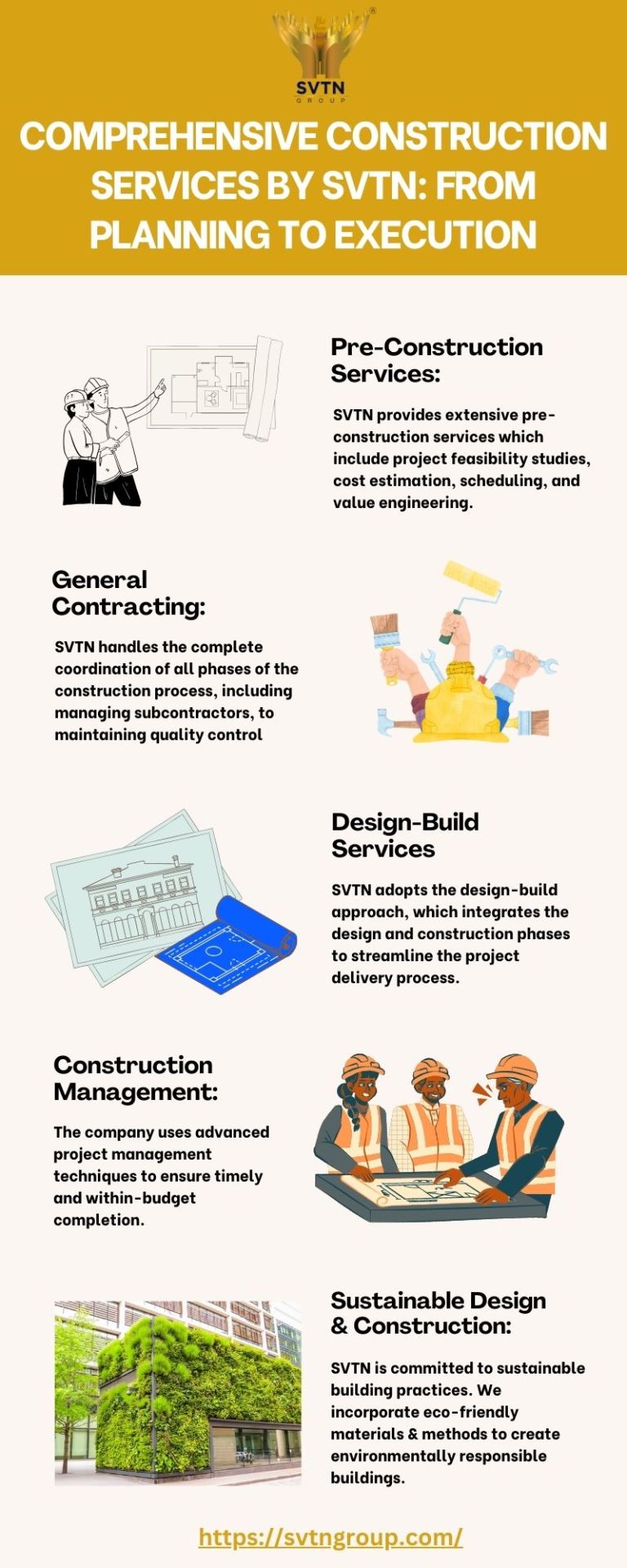
SVTN Group provides end-to-end construction solutions in Pune, ensuring seamless project execution from planning to completion. Their services encompass initial feasibility studies, cost estimation, and detailed project planning. SVTN excels in general contracting, managing all phases of construction with strict quality control and adherence to safety standards. They also offer construction management and design-build services, integrating advanced technologies like Building Information Modelling (BIM) for efficient project delivery. Committed to sustainability, SVTN incorporates eco-friendly practices to deliver high-quality, cost-effective building solutions. Their holistic approach ensures timely and budget-conscious project completion, reinforcing their reputation for excellence.
#SVTN#svtn construction#aluform prefab construction#aluform construction technology#aluform construction#aluform formwork#top contractors in pune#pune best construction company#best construction work company in pune#best civil engineering companies in pune#quality construction works llc#quality construction works#quality construction work#Affordable and Quality Construction Works#civil contractors in pune#building contractors in pune#top civil engineering companies in pune#building construction company in pune#new construction companies in pune#top civil contractors in pune#top civil construction companies in pune
2 notes
·
View notes
Text
Architectural BIM Services: Architectural Drafting & CAD Conversion
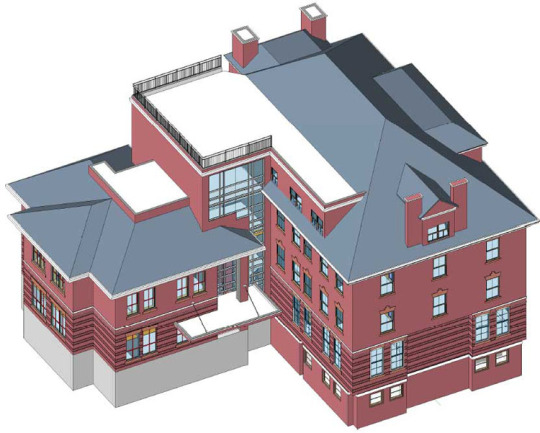
Architectural BIM services encompass a range of offerings aimed at enhancing architectural design processes. At Hitech BIM Services, we provide various architectural design services, from converting 2D AutoCAD floor plans into detailed 3D Revit BIM models, transforming CAD drawings into BIM execution plans, and developing full-scale rendered LOD (Level of Development) models following AIA standards, and integrating architectural, structural, and MEP designs to create clash-free models, etc.
Our architectural BIM services provide improved design communication, enhanced coordination with engineers and contractors, and develop comprehensive architectural building designs from existing 2D drafts and CAD models.
As experienced providers of outsourcing BIM architectural services, our team of professional designers excels in BIM platforms and delivers 3D models that meet specific design standards. Partnering with us ensures sustainable building designs, efficient architectural solutions, and precise technical documentation throughout the project lifecycle.
#architecture#building#bim#architectural design#architectural bim services#architectural 3d modeling#outsourcing
3 notes
·
View notes